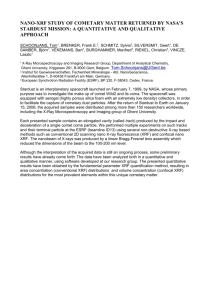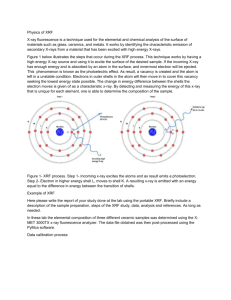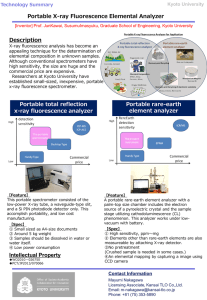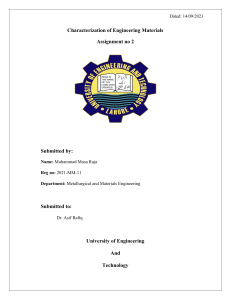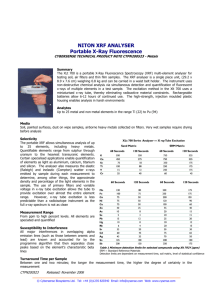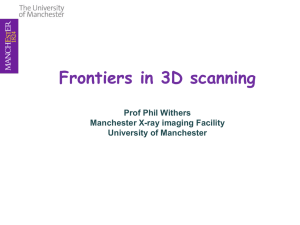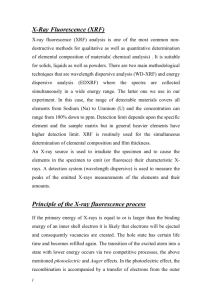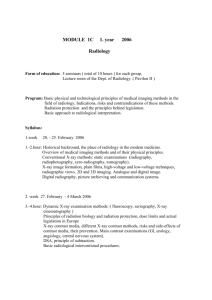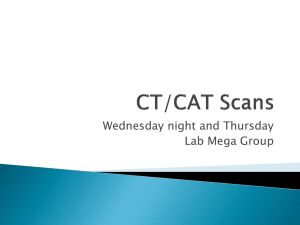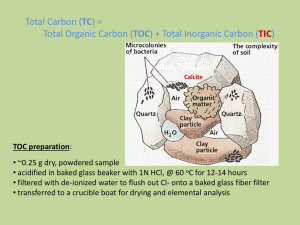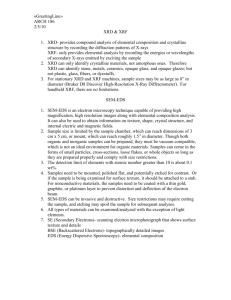XRF contrast imaging: from microscopy to tomography
advertisement
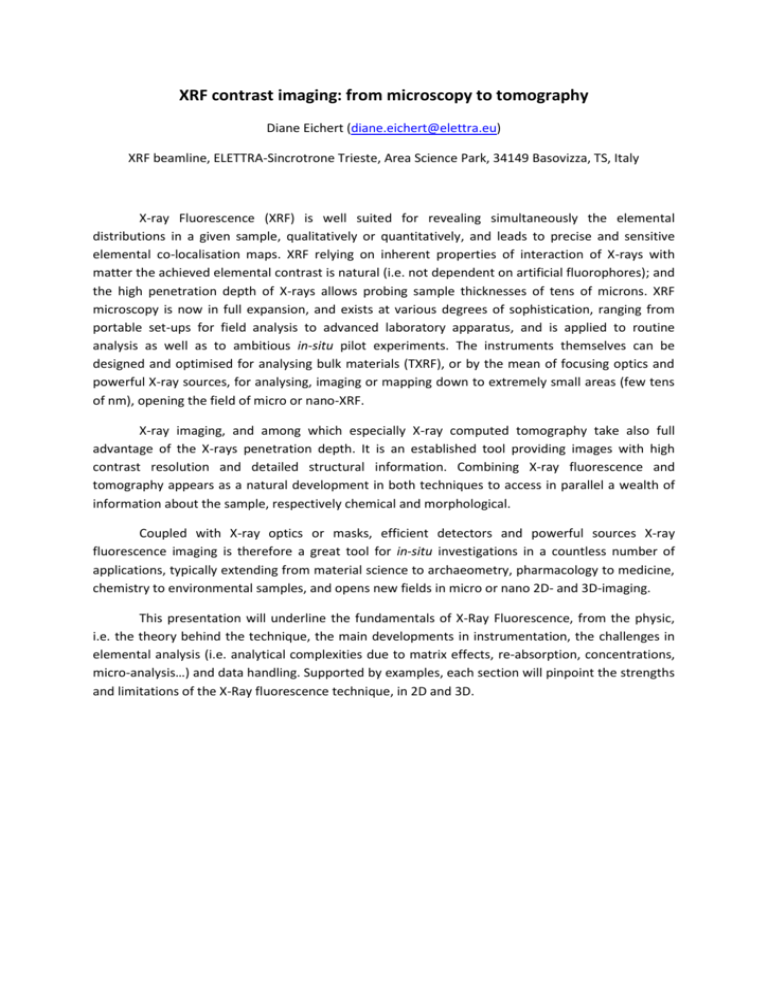
XRF contrast imaging: from microscopy to tomography Diane Eichert (diane.eichert@elettra.eu) XRF beamline, ELETTRA-Sincrotrone Trieste, Area Science Park, 34149 Basovizza, TS, Italy X-ray Fluorescence (XRF) is well suited for revealing simultaneously the elemental distributions in a given sample, qualitatively or quantitatively, and leads to precise and sensitive elemental co-localisation maps. XRF relying on inherent properties of interaction of X-rays with matter the achieved elemental contrast is natural (i.e. not dependent on artificial fluorophores); and the high penetration depth of X-rays allows probing sample thicknesses of tens of microns. XRF microscopy is now in full expansion, and exists at various degrees of sophistication, ranging from portable set-ups for field analysis to advanced laboratory apparatus, and is applied to routine analysis as well as to ambitious in-situ pilot experiments. The instruments themselves can be designed and optimised for analysing bulk materials (TXRF), or by the mean of focusing optics and powerful X-ray sources, for analysing, imaging or mapping down to extremely small areas (few tens of nm), opening the field of micro or nano-XRF. X-ray imaging, and among which especially X-ray computed tomography take also full advantage of the X-rays penetration depth. It is an established tool providing images with high contrast resolution and detailed structural information. Combining X-ray fluorescence and tomography appears as a natural development in both techniques to access in parallel a wealth of information about the sample, respectively chemical and morphological. Coupled with X-ray optics or masks, efficient detectors and powerful sources X-ray fluorescence imaging is therefore a great tool for in-situ investigations in a countless number of applications, typically extending from material science to archaeometry, pharmacology to medicine, chemistry to environmental samples, and opens new fields in micro or nano 2D- and 3D-imaging. This presentation will underline the fundamentals of X-Ray Fluorescence, from the physic, i.e. the theory behind the technique, the main developments in instrumentation, the challenges in elemental analysis (i.e. analytical complexities due to matrix effects, re-absorption, concentrations, micro-analysis…) and data handling. Supported by examples, each section will pinpoint the strengths and limitations of the X-Ray fluorescence technique, in 2D and 3D.
